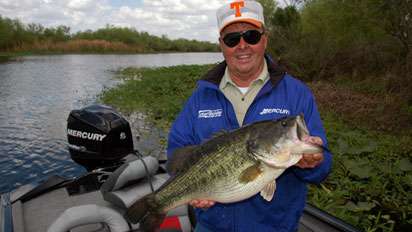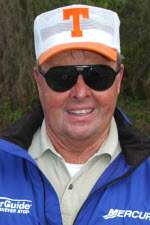
It’s hard to say specifically when bass anglers first began turning their backs on the shoreline and heading out for “open water” in large numbers.
I mean even way back in my fishing history I remember looking over my shoulder and seeing fish chasing schooling shad and pondering the option, “Should I go out there? What’s that all about?”
Of course, I came to find out. And, over time, I learned open-water techniques from pioneer bass anglers such as Glen Andrews and Buck Perry. With that foundation, I learned more through trial and error and a lot of time aboard a bass boat. In 1974, I wrote a book with Mark Sosin titled Practical Black Bass Fishing that detailed many such techniques.
It was great to be in on the first wave of this method as the age of bass fishing began to boom in the late 1960s and early 1970s. Back then, I found and “kept” many schools of open-water bass at Southern reservoirs like Pickwick, Enid and Sardis. Honestly, I could move around to several open-water spots, fish them conservatively, catching and releasing five to seven quality bass in each locale, and nearly always, barring weather twists, have a 30- to 40-bass day. And this would last from June until late October.
Then such tactics were largely a secret, and some of us worked to keep it that way for a long time. Heck, Joe Garner, a dear friend of mine from west Tennessee, and I carried big hats and cane poles in our boat that we would quickly grab when we heard a boat approaching us while we fished open-water holes. Sometimes the poles didn’t always have lines tied on, but worked like a charm. Whenever we heard one of those old-time ironing board-shaped bass boats coming our way, we’d grab the poles and put on the caps. The boat would slow down and look at us from a distance. We’d hear ’em mutter, “Crappie fishermen.” Then away they would go and we’d chuckle, our secret safe.
Over time, though, open-water and/or structure fishing became routine for anglers. And when I speak of structure, I mean any unique feature out away from the shoreline and along the lake bottom. Many anglers will refer to a stump on its side as structure, but that is what I refer to as “cover.” When you think of structure, think topographical, and you will get the idea.
Fish like features that are unique, perhaps for many reasons. For example, they also always like escape routes — those shallow locales with deep water nearby. The latter has a lot to do with fish relating to open water structure, I think. Changes in structure provide escape routes.
Sure, finding bass-holding structure took a lot of time back then, in an era void of modern electronics. Why, I still remember how exciting it was to get my first topo maps. The U.S. Army Corps of Engineers’ maps were good, but it seems the USGS maps were better, showing closer intervals.
With today’s electronics, it’s a completely new ballgame, and one with a lot more players. But rest assured it still works, especially in the warmer months. These days most anglers recognize that bass spend more time away from the shore than close to it. In fact, I suspect it’s a safe bet, on any given day, that more bass fishermen fish open-water than along the banks. It definitely remains true that if you can find good structure, out in that famed open water, you are going to also find fish. You just have to make them cooperate.
For more words of wit and wisdom from one of our sport’s greatest legends, check out www.billdanceoutdoors.com.

